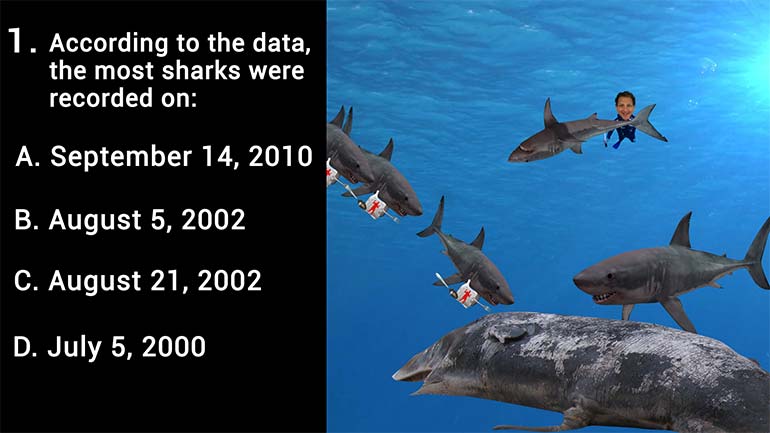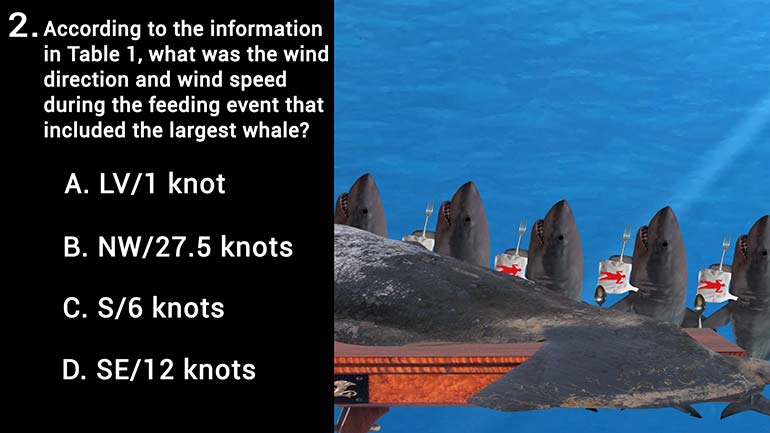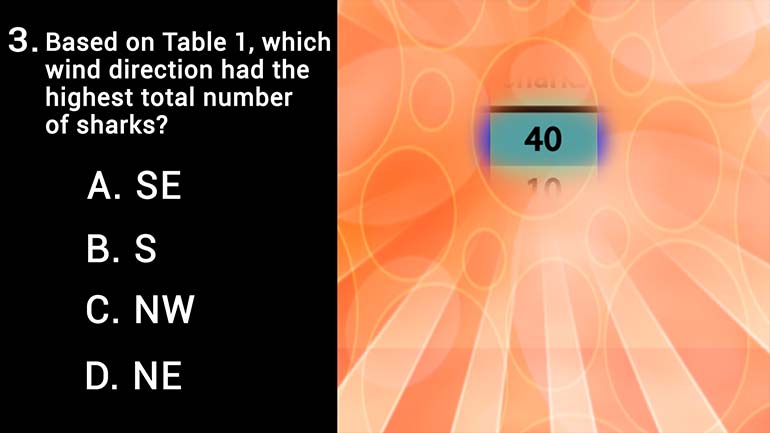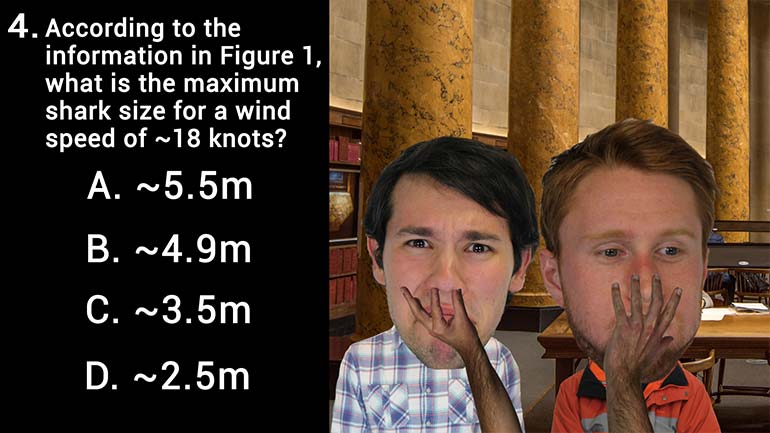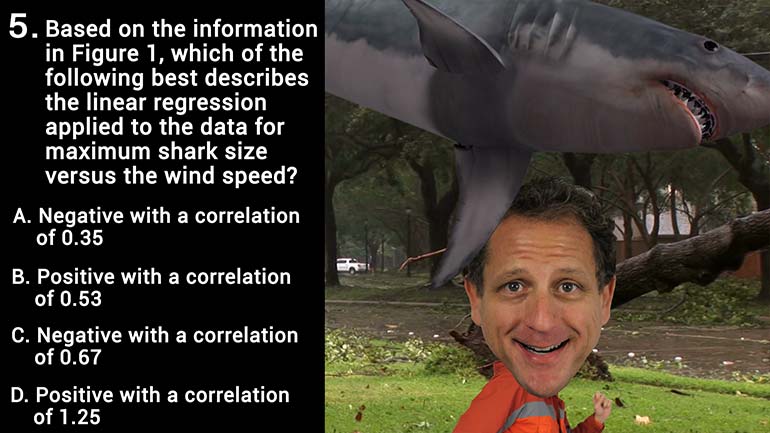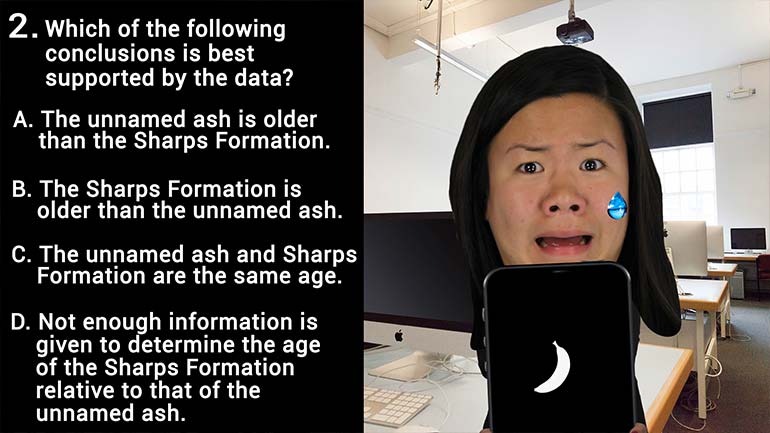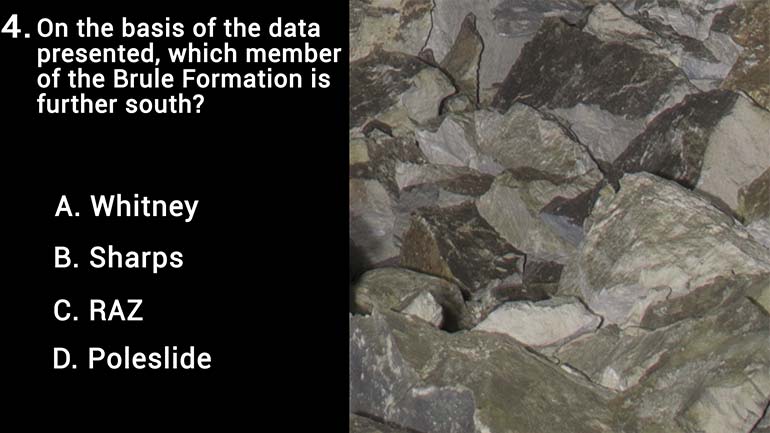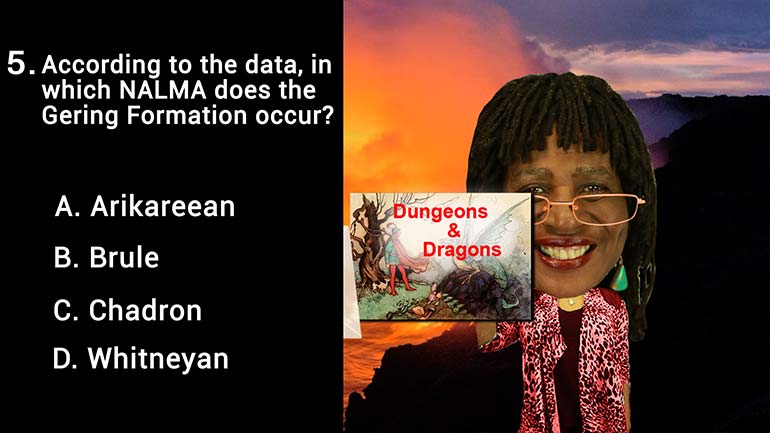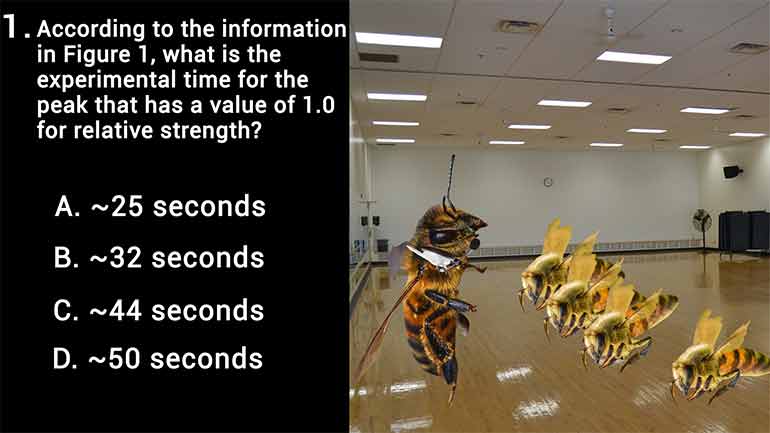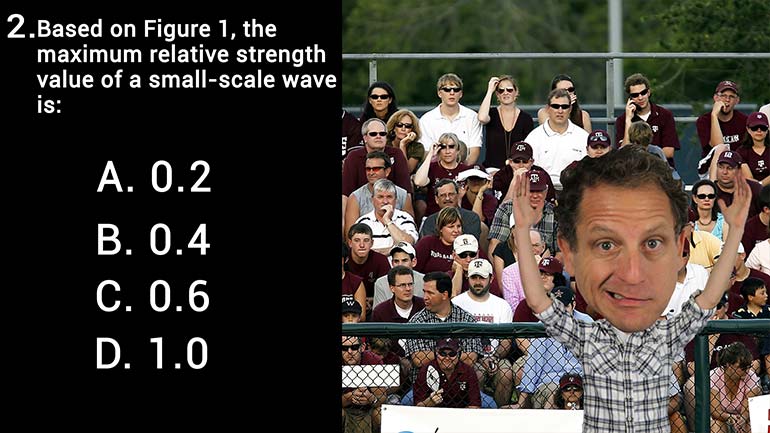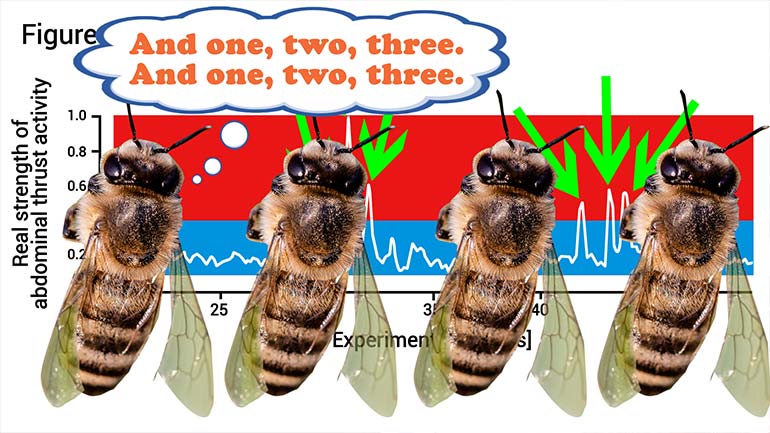ShmoopTube
Where Monty Python meets your 10th grade teacher.
Search Thousands of Shmoop Videos
Data Representation Videos 15 videos
According to the data, the most sharks were recorded on:
According to the information in Table 1, what was the wind direction and wind speed during the feeding event that included the largest whale?
Based on Table 1, which wind direction had the highest total number of sharks?
ACT Aspire Science: Big Scale Waves 0 Views
Share It!
Description:
On the basis of the data presented, how many times was a big-scale wave generated over the experimental time?
Transcript
- 00:00
Yeah Oh Okay More weird science We'll figure one right
- 00:09
here shows the relative strength of abdominal thrust activity versus
- 00:14
experimental time while a predatory wasp is in front of
- 00:17
the nest No small scale waves are in the blue
- 00:21
area and big scale waves Aaron the red area right
Full Transcript
- 00:24
now down to figure to right here that shows the
- 00:26
number of shaking bees per frame versus experimental time The
- 00:30
velocities in distances air split into different classes A class
- 00:35
one distance is closest to the nest and a class
- 00:38
five distance is farthest from the nest Well velocity is
- 00:42
split into eight classes with Class one being the slowest
- 00:45
in class Eight being the fastest Well the closer the
- 00:49
hornet the higher the wave strength and the faster the
- 00:51
hornet flies past the net The higher the wave strength
- 00:55
Well the wave strength is controlled by number of shaking
- 00:58
bees I eat the higher number of shaking bees The
- 01:01
stronger the wave right makes sense Okay so And then
- 01:04
here's some detail on figure one kind of skin that
- 01:07
if you want all right then figure to when the
- 01:10
bees and the birds and whatever Alright that's actually a
- 01:13
different course On the basis of the data presented How
- 01:17
many times was a big scale wave generated over the
- 01:19
experimental time Okay experimental time and every place Okay how
- 01:27
many big scale shimmers does it take to scare away
- 01:30
Ah Hornet That's the question everyone's asking around the water
- 01:34
cooler today Actually nobody's asking All right well each spike
- 01:37
in the graph signals one wave that's way that wave
- 01:40
that's away when the bees are all coordinating their moves
- 01:44
at approximately the same relative intensity on ly a few
- 01:48
times do they manage TTO work up the intensity necessary
- 01:52
for their performance to qualify them for the big time
- 01:55
The print on the beat Yeah according to scientists Wei
- 02:00
have no idea what's going on inside of these bed
- 02:03
Alright well the number of white line spikes in the
- 02:05
red area of the graph show how many of these
- 02:08
big scale waves were generated While unfortunately there isn't a
- 02:12
fancy single word term for when something occurs six times
- 02:17
like six ice or sixty year Something like that Anyway
- 02:21
the answer is D six times
Related Videos
According to the data, the most sharks were recorded on:
According to the information in Table 1, what was the wind direction and wind speed during the feeding event that included the largest whale?
Based on Table 1, which wind direction had the highest total number of sharks?
According to the information in Figure 1, what is the maximum shark size for a wind speed of ~18 knots?
Based on the information in Figure 1, which of the following best describes the linear regression applied to the data for maximum shark size versus...
